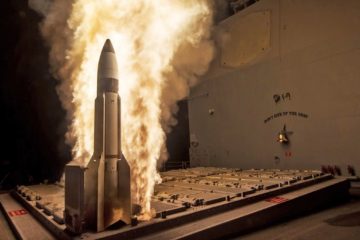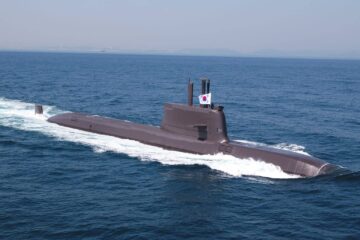The booth’s Airborne System Executive Mr. Philippe Saint Marc, confirmed that high-ranked ROK Navy officers visited the MBDA’s booth and showed sincere interest in Sea Venom missiles for the Wildcat helicopters. However, he denied to give further details on this by saying that “The door is still open.”
He also added that MBDA exhibitors have not been informed well about the negotiation status between MBDA and the ROK Navy and the negotiation is mostly about military technical aspects that are beyond his knowledge. According to them, MBDA already proposed its Sea Venom missile to the Korean Navy, following the service procurement of Wildcat helicopters. Sea Venom is already fully integrated with the helicopter type. Modification or technical change in the platform are not needed. Eight AW159 Wildcat have been procured by the ROK Navy as part of the Maritime Operation Helicopter (MOH) Batch 1 tender.
Since the ROK Navy also considers developing and acquiring its own indigenous helicopters, MBDA said that the company is not in a proper position to clearly comment whether South Korea would finally adopt Sea Venom in the end, and that the negotiation is still ongoing.

MBDA displayed a mockup of a simulator screen showing the overall design of firing control system that could be used in the cockpit of helicopters. The screen included a tactical display that receives target images and combat environment from Sea Venom missiles. The display only adopted buttons, without any joystick.
Saint Marc emphasized that the most proud and remarkable characteristic of Sea Venom is its precision strike capability, even in a very complex combat environment where both friendly and hostile ships closely engage at sea. When both sides face each other in a very close distance, Sea Venom can precisely target and destroy only the hostile ships without causing any collateral damage to friendly forces. Also, Sea Venom basically uses sea-skimming technology that makes enemy ships much harder to intercept incoming Sea Venoms on a short notice. Sea Venom can engage multiple targets at the same time. The man-in-the-loop feature allows the shooter to easily switch between targets even after the missile is launched from the helicopter, MBDA added.

The Executive Philippe Saint Marc explained that Sea Venom (known as ANL in Frenhc) was first developed through a cooperation between the United Kingdom and France as a joint program. The two countries completed the development this year, waiting for the first Sea Venom to be loaded in the British Wildcat. France would acquire Sea Venom much later than the UK will do, because France plans to use the missile on its new helicopter called Guepard, according to MBDA.






